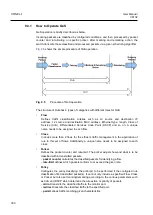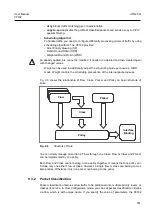
User Manual
UMN:CLI
V8102
329
9.3
Rule and QoS
The V8102 provides a rule and QoS feature for traffic management. The rule classifies
incoming traffic, and then processes the traffic according to user-defined policies. You can
use the physical port, 802.1p priority (CoS), VLAN ID, DSCP, and so on to classify incom-
ing packets.
You can configure the policy in order to change some data fields within a packet or to re-
lay packets to a mirror monitor by a rule. QoS (Quality of Service) is one of useful func-
tions to provide more reliable service for traffic flow control. It is very serviceable to pre-
vent overloading and delaying or failing of sending traffic by giving priority to traffic.
QoS can give priority to specific traffic by basically offering higher priority to the traffic or
lower priority to the others.
When processing traffic, the traffic is usually supposed to be processed in time-order like
first in, first out. This way, not processing specific traffic first, might cause undesired traffic
loss in case of traffic overloading. However, in case of overloading traffic, QoS can apply
processing order to traffic by reorganizing priorities according to its importance. By favor
of QoS, you can predict network performance in advance and manage bandwidth more
efficiently.
The QoS provides the following benefits:
Control over network resources
Bandwidth, delay and packet loss can be effectively controlled by QoS feature. The net-
work administrator can limit the bandwidth for non-critical applications (such as FTP file
transfers), so that other applications have a greater amount of bandwidth available to
them.
Effective use of resources
An effective use of network resorces can support guaranteed bandwidth to a few critical
applications to ensure reliable application performance. QoS ensures that the most im-
portant and critical traffic is transmitted immediately without starvation.
Customized service
QoS helps the internet service providers provide differentiated services for their custom-
ers of the network. It allocates guaranteed bandwidth to more important applications that
produce real-time traffic, such as voice, video and audio.
Traffic Prioritization
As you deploly QoS, it guarantees bandwidth and reduces delay time to ensure the appli-
cations can transmit the packets properly by handling the traffic with higher priority than
regular traffic.
















































